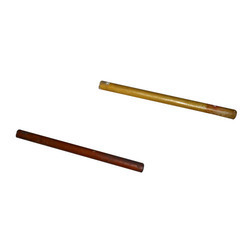Silica Gel Breather
Price 50 INR/ Piece
Silica Gel Breather Specification
- Conductor Shape
- Round
- Product Type
- Silica Gel Breather
- Voltage
- Medium Voltage Volt (v)
- Application
- Overhead, Industrial
- Conductor Material
- Aluminum
- Connector Color
- Grey
Silica Gel Breather Trade Information
- Minimum Order Quantity
- 100 Pieces
- Payment Terms
- Telegraphic Transfer (T/T), Cheque
- Supply Ability
- 100 Pieces Per Day
- Delivery Time
- 2-3 Days
- Main Export Market(s)
- Asia, Australia, South America, Western Europe, Middle East, Central America, Eastern Europe, North America, Africa
- Main Domestic Market
- All India
About Silica Gel Breather
A silica gel breather is a device used in electrical transformers and other oil-filled equipment to maintain the dryness of the insulating oil. It contains a cylindrical container filled with silica gel desiccant, which absorbs moisture from the air that enters or exits the equipment during temperature changes. The silica gel breather helps prevent the accumulation of moisture and the degradation of the insulating oil, ensuring optimal performance and extending the lifespan of the equipment.FAQ: Q: What is the purpose of a silica gel breather?A: The primary purpose of a silica gel breather is to maintain the dryness of the insulating oil in electrical transformers and similar oil-filled equipment. It prevents moisture from entering the equipment during temperature variations. By absorbing moisture from the air that enters or exits, the silica gel breather helps preserve the insulating properties of the oil and reduces the risk of oil degradation.Q: How does a silica gel breather work?A: A silica gel breather contains a desiccant material, usually silica gel, which has a high affinity for water molecules. As the air enters or exits the equipment, it passes through the silica gel, which absorbs the moisture present in the air. This process keeps the insulating oil dry by preventing the ingress of moisture, which can lead to oil degradation and reduced insulation performance.Q: Where are silica gel breathers commonly used?A: Silica gel breathers are commonly used in electrical transformers, reactors, and other oil-filled equipment. These devices are critical for maintaining the dryness of the insulating oil and ensuring optimal performance and longevity of the equipment. Silica gel breathers can be found in various industries, including power generation, transmission and distribution, industrial manufacturing, and renewable energy.Q: How often should the silica gel be replaced in a breather?A: The frequency of silica gel replacement depends on various factors, such as the equipments operating conditions, the amount of moisture present, and the desiccants saturation level. Regular monitoring of the silica gels color or moisture indication can help determine when it needs replacement. Manufacturers typically provide guidelines for replacement intervals based on specific product specifications and conditions.FAQs of Silica Gel Breather:
Q: What is the conductor material used in the Silica Gel Breather?
A: The conductor material used is aluminum.Q: What is the shape of the conductor in the Silica Gel Breather?
A: The conductor shape is round.Q: For what applications is the Silica Gel Breather suitable?
A: The Silica Gel Breather is suitable for overhead and industrial applications.Q: What voltage rating does the Silica Gel Breather support?
A: The Silica Gel Breather supports medium voltage levels.Q: What is the connector color of the Silica Gel Breather?
A: The connector color is grey.
Tell us about your requirement

Price:
Quantity
Select Unit
- 50
- 100
- 200
- 250
- 500
- 1000+
Additional detail
Mobile number
Email
More Products in Transformer Accessories Category
Silica Gel
Price 100 INR / Kilograms
Minimum Order Quantity : 100 Kilograms
Conductor Shape : Round
Product Type : Silica Gel
Connector Color : Purple
Application : Overhead, Industrial
SRBP Rod
Price 20 INR / Piece
Minimum Order Quantity : 50 Pieces
Conductor Shape : Round
Product Type : SRBP Rod
Connector Color : Red And Yellow
Application : Overhead, Industrial
Transformer Bushing Rod
Price 360 INR / Kilograms
Minimum Order Quantity : 50 Kilograms
Conductor Shape : Round
Product Type : Transformer Bushing Rod
Connector Color : Golden
Application : Overhead, Industrial

 Send Inquiry
Send Inquiry





 Send Inquiry
Send Inquiry Send SMS
Send SMS